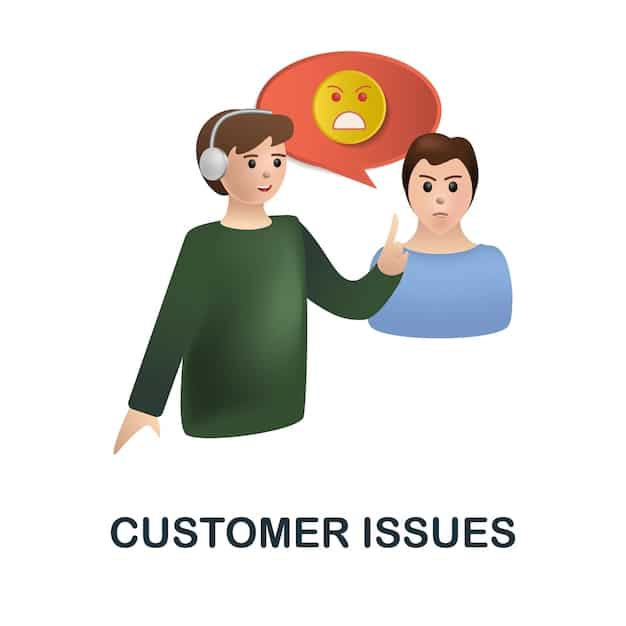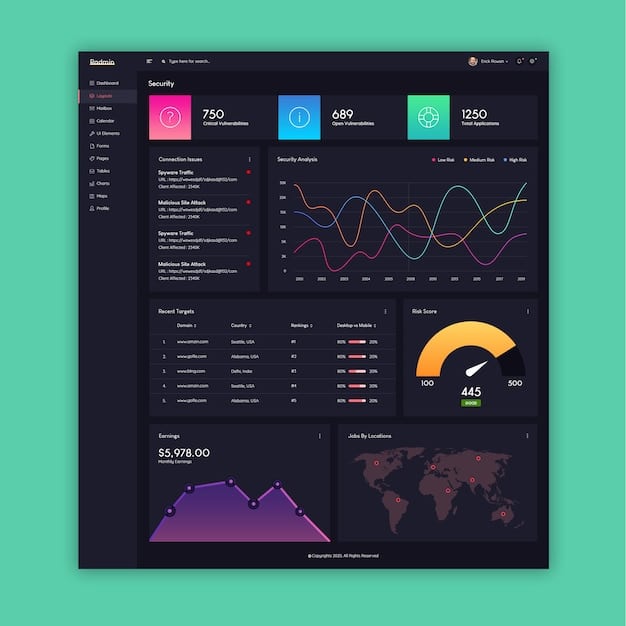Unlock ROI: Financial Analysis of Proactive Customer Support

Unlock ROI: Financial Analysis of Proactive Customer Support Proactive customer support offers significant ROI through increased customer loyalty, reduced churn, and improved operational efficiency, justifying investment with a clear financial analysis.
Investing in customer support is often seen as a cost center, but what if it could be a profit driver? This article examines what is the ROI of investing in proactive customer support? A financial analysis reveals how this approach can significantly impact your bottom line.
Understanding Proactive Customer Support and Its Benefits
Proactive customer support is more than just answering queries; it’s about anticipating and resolving customer issues before they even arise. Let’s delve into understanding proactive customer support and its benefits.
What is Proactive Customer Support?
It’s a strategy where businesses reach out to customers to offer assistance, provide information, or solve potential problems based on data analysis and customer behavior patterns.
Reactive vs. Proactive Support
While reactive support waits for customers to contact them, proactive support actively seeks opportunities to improve the customer experience, creating a sense of partnership and trust.
- Enhanced Customer Loyalty: Addressing concerns before they escalate builds stronger relationships.
- Reduced Customer Churn: Solving issues preemptively can prevent customers from switching to competitors.
- Improved Brand Reputation: Proactive support demonstrates a commitment to customer satisfaction.
- Increased Operational Efficiency: Reducing the volume of reactive support requests frees up resources.
Ultimately, proactive customer support is about creating a seamless and positive experience for your customers, which leads to long-term value for your business.

Key Metrics to Measure ROI in Proactive Support
To understand the true impact of proactive customer support, it’s crucial to define and track key metrics that directly correlate with financial gains. Here’s how we measure ROI in proactive support.
Customer Satisfaction Score (CSAT)
CSAT measures the level of satisfaction customers have with specific interactions or the overall customer experience. It’s usually gathered through surveys after an interaction.
Net Promoter Score (NPS)
NPS gauges customer loyalty and willingness to recommend your brand to others. A higher score indicates a greater likelihood of positive word-of-mouth referrals.
- Customer Retention Rate: Measures the percentage of customers a company retains over a specific period.
- Customer Lifetime Value (CLTV): Predicts the total revenue a customer will generate throughout their relationship with your company.
- Support Ticket Volume: Tracks the number of support requests received, reflecting the efficiency of proactive measures.
By carefully monitoring these metrics, businesses can gain a clear understanding of how proactive support initiatives translate into tangible financial benefits.
Calculating the Cost of Proactive Customer Support
Before determining the ROI, it’s essential to understand the costs involved in implementing and maintaining a proactive customer support system. Let’s break down the costs of proactive customer support.
First, there’s the initial investment in technology, such as CRM systems, AI-powered chatbots, and data analytics tools. These tools enable businesses to anticipate customer needs and provide personalized support.
Ongoing expenses include employee salaries, training costs, and software maintenance fees. Regular training ensures that support teams are equipped to handle various customer scenarios proactively.
- Software and Tools: CRM, analytics platforms, and proactive engagement tools.
- Training and Development: Equipping support staff with the skills for proactive engagement.
- Content Creation: Developing helpful resources, FAQs, and guides.
A thorough cost analysis is crucial to ensure that the investment in proactive customer support is financially sustainable and aligns with business goals.

Quantifying the Financial Benefits of Proactive Support
The financial benefits of proactive customer support stem from improvements in customer retention, increased revenue, and optimized operational efficiency. Let’s quantify the financial benefits of proactive support.
Reduced churn is a significant benefit. By addressing concerns before they escalate, businesses can retain customers who might have otherwise switched to competitors, resulting in increased customer lifetime value.
Proactive support can drive revenue growth through upselling and cross-selling opportunities. When customers feel understood and supported, they are more likely to make additional purchases.
- Increased Sales: Proactive engagement can lead to upselling and cross-selling opportunities.
- Reduced Service Costs: Lower support ticket volumes translate to reduced operational costs.
- Improved Customer Lifetime Value (CLTV): Loyal customers contribute more revenue over time.
Ultimately, quantifying these benefits requires careful tracking of key performance indicators and comparing them before and after implementing proactive support initiatives, providing a clear picture of the financial return.
Strategies for Implementing Proactive Customer Support
Implementing a successful proactive customer support strategy requires careful planning and execution. Here are some strategies for implementing proactive customer support.
Start by analyzing customer data to identify common pain points and areas where customers frequently need assistance. This analysis can inform the development of targeted support initiatives.
Utilize technology, such as AI-powered chatbots and predictive analytics, to anticipate customer needs and deliver personalized support at scale. Automation can help streamline processes and improve efficiency.
- Personalized Onboarding: Tailoring the onboarding experience to individual customer needs.
- AI-Powered Chatbots: Providing instant support and answering frequently asked questions.
- Predictive Analytics: Anticipating customer needs and addressing them proactively.
- Customer Education: Creating resources to help customers maximize the value of your product or service.
By taking a data-driven approach and leveraging technology, businesses can effectively implement proactive customer support strategies that enhance customer satisfaction and drive business results.
Case Studies: ROI Success Stories in Proactive Support
Examining real-world examples can provide valuable insights into the potential ROI of proactive customer support. Here are some brief case studies to consider.
Company A, a SaaS provider, implemented a proactive support system that included personalized onboarding and AI-powered chatbots. As a result, they saw a 20% reduction in customer churn and a 15% increase in customer satisfaction.
Retailer B used predictive analytics to identify customers at risk of abandoning their online purchases. By reaching out with targeted offers and assistance, they recovered 10% of potentially lost sales.
These case studies demonstrate that proactive customer support can deliver significant financial benefits across various industries, reinforcing the importance of investing in this approach.
| Key Point | Brief Description |
|---|---|
| 😊 Increased Loyalty | Proactive support builds stronger customer relationships. |
| 📈 Revenue Growth | Upselling and cross-selling opportunities increase revenue. |
| ✅ Reduced Churn | Preemptive issue resolution prevents customer churn. |
| ⚙️ Operational Efficiency | Decreased support ticket volume reduces operational costs. |
FAQ
▼
Proactive customer support involves anticipating customer needs and resolving potential issues before they even arise, enhancing their overall experience.
▼
It enhances customer satisfaction, reduces churn, improves brand reputation, and boosts operational efficiency by reducing reactive support requests.
▼
Key metrics include Customer Satisfaction Score (CSAT), Net Promoter Score (NPS), Customer Retention Rate, and Customer Lifetime Value (CLTV).
▼
Costs include expenses for technology, employee salaries, ongoing training, and the creation of customer support-related content and helpful resources.
▼
Yes, by nurturing customer relationships and providing timely assistance, businesses can unlock additional upselling and cross-selling opportunities, increasing revenue.
Conclusion
Investing in proactive customer support is not merely a cost but a strategic move that yields significant financial returns. By understanding the costs, quantifying the benefits, and implementing effective strategies, businesses can unlock the true value of proactive support and drive sustainable growth.





